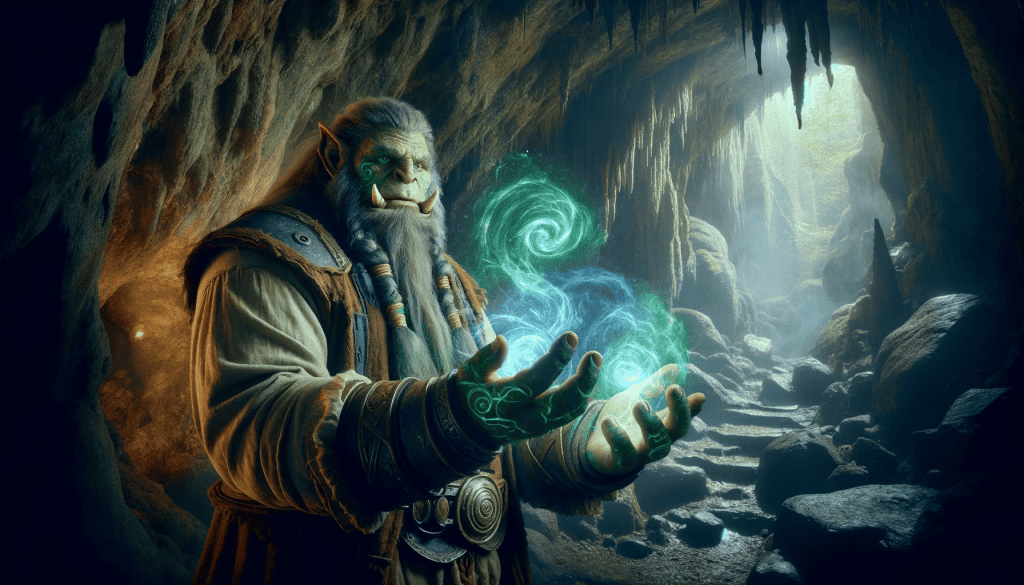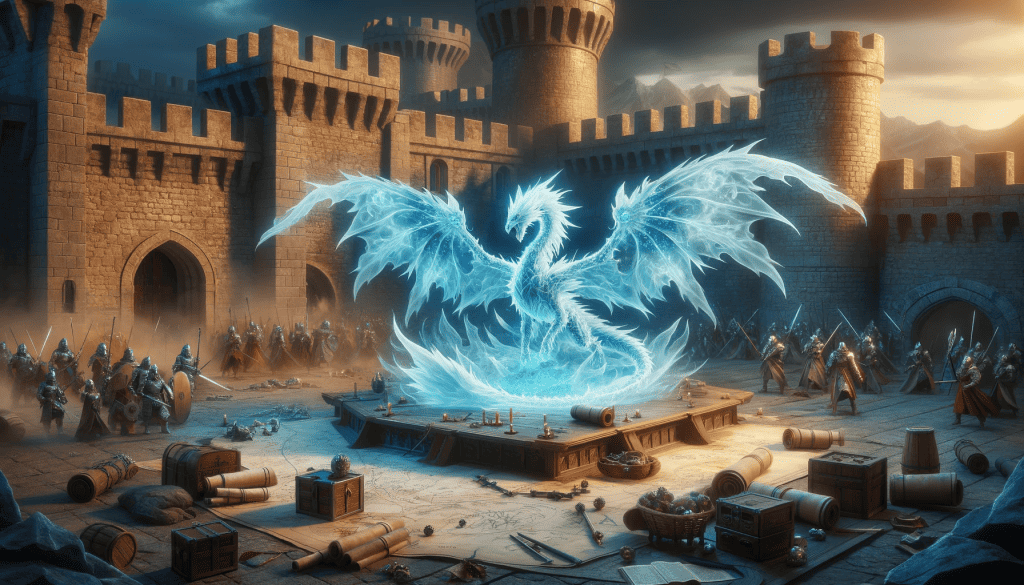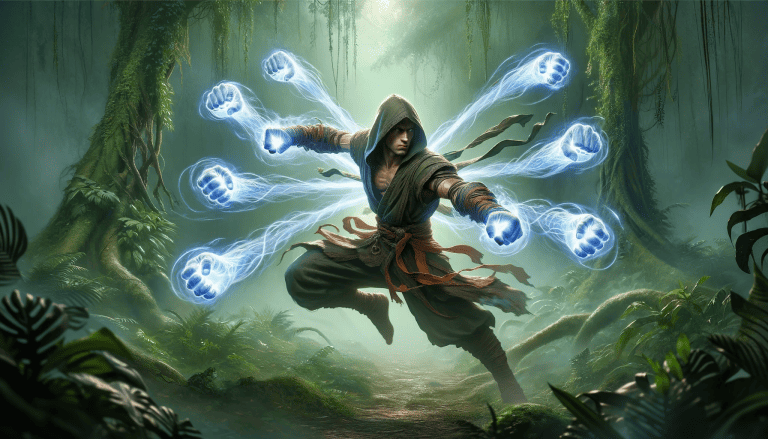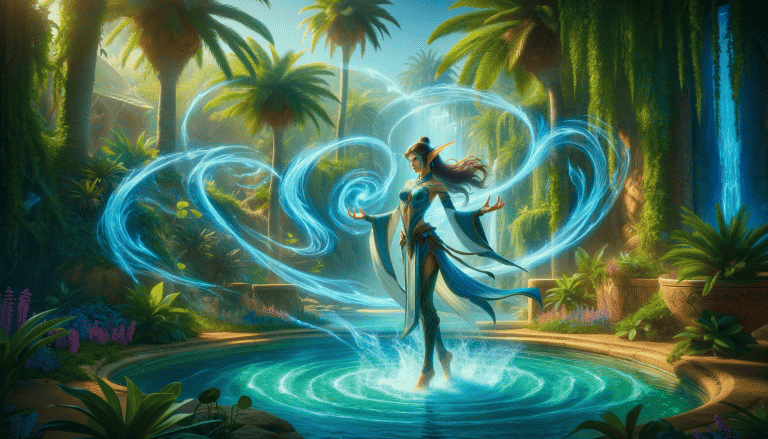How to Play a Circle of Stars Druid in 5e D&D
First introduced in Tasha’s Cauldron of Everything, the Circle of Stars is one of my favorite Druid subclasses, and not just because it’s a powerful choice. It appeals to Druid veterans who want to create a complex build and allows those new to the class to dip their toes in and explore.
The Circle of the Stars doesn’t look to the earth but to the skies, drawing their power from the stars and constellations in order to utilize all they provide. It’s time for you to grab your D&D star map and telescope as we explore everything Circle of Stars offers your Druid.
How to Use This Guide
Throughout this guide, you will see a series of emojis—we use these to rank how useful a feature or ability is for your chosen class.
✅ — A critical feature that you absolutely need in order to play your Druid to the best of its ability. It may also provide exclusive bonuses.
🆗 — A good feature that should definitely be considered.
⚠️ — A weaker feature that might only work with specific builds. Definitely largely circumstantial.
⛔ — A terrible feature that could be detrimental to your class that often weighs you down. It can also be a dump stat that is completely useless.
Why Choose a Circle of the Stars Druid 5e?
The exciting thing about a Circle of Stars Druid is that the cosmos themselves fuel your power. You spend your time watching the night sky with your star map and deciphering the patterns found within D&D constellations in order to unlock the secrets of the universe and heighten your power.
As a Circle of Stars Druid, you understand that the cosmos have a way of communicating with all forms of life. You just have to look up and be willing to accept the messages they have to share. Star records are usually stored at megalithic sites, making them the best places to gather new intelligence.
Why is this important? Well, as a Circle of Stars Druid, you’ll be known as the Astronomer of the group. Druids in this Circle tend to keep detailed records of their finds and the various constellation maps they make. This means that you’ll not only find new information at these important sites but also store yours.
What About Wild Shape and Monoliths?
Typically, Wild Shape is associated with the Circle of the Moon because they have the strongest connection to it and get the most out of it. However, since every Druid can use Wild Shape (and you’ll likely need to at some point) it’s still an important feature for Circle of the Stars Druids.
Your Wild Shape forms are dictated by the creatures you’ve encountered in your life and often stem from the biome your Druid grew up in. This means that as a Circle of the Stars Druid, you might want to put a little more detail into your background and choose somewhere that fits the starry theme.
This will also dictate where your monoliths lie—the place where your sacred knowledge and night sky recordings are kept. Maybe you want your origins to be high on the mountains or stretched across vast plains. It’s down to you, and there are plenty of ways to connect the location to stargazing.

🌿 Looking to play another subclass? Check out our Circle of the Shepherd Druid guide
How to Play a Circle of the Stars Druid
Knowing how to play your class and the subclass you’ve chosen is a vital part of the game. So, how do you go about playing a Circle of the Stars Druid?
There are four vital aspects to your Circle of the Stars build:
- High Wisdom modifiers
- Knowing the basics of your build
- Embrace the role of the navigator and wiseman
- Choosing the right spells
Choosing a Race
The only thing you really have to focus on for a Circle of the Stars build is Wisdom, since it’s the primary stat Druids need in D&D 5e. However, there are two races that we strongly recommend—Aarakocra and Kalashtar.
Taking time to include the two races I just mentioned, these are the top Circle of the Stars races to consider:
- Aarakocra
- Firbolg
- Kalashtar
- Loxodon
But what makes Kalashtar and Aarakocra such prime choices for the role? Well, the Aarakocra brings flight to the table and is able to inherit a migratory trait. All in all, it works nicely for a Druid that spends so much of their time with the sky. You also get a nice +2 Dexterity and +1 Wisdom.
Kalashtar are a dreamy, psychic, human form that blend in so nicely with the cosmic mystery surrounding the Circle of the Stars. You get a +2 to Wisdom and a +1 to Charisma, and there is more to this racial choice than meets the eye. Works nicely if you want to multiclass as well.
The ability Dual Mind allows you to gain an Advantage on your Wisdom Saving Throws. Mental Discipline gives you resistance to psychic attacks and damage. And Mind Link grants telepathic communication with your allies. Overall, these abilities provide a lot of advantages and work well from an RP perspective.
Knowing Your Class and Build
The great thing about Druids is the fact that they offer so much versatility for combat and utility. They can work as melee fighters, beast tanks, and even masters of area of effect abilities. As a Circle of the Stars Druid, you’ll be sticking with the latter—summoning and striking from a distance.
Knowing your class and build is an essential part of playing your Druid, and for the Circle of the Stars, I recommend proficiency in Insight and Medicine so you can play off your high Wisdom. Sticking with the basics like a javelin, sling, or scimitar is the best route to take for weapons.
Of course, all Druids know the Druidic language, which can add an element of mystery to your Starry Druid and give you some nice RP opportunities. You’ll also be able to use Wild Shape from 2nd level. It can be used twice a day with a duration that is equal to half of your level.
When you become one with the ring of stars 5e, you can use Wild Shape for multiple effects. However, it’s good to have classic beast shapes on your list so that you can tackle a range of situations, from scouting all the way to light combat. You’ll also have the option to find a familiar using Wild Companion, which can come in handy.

Spells and Cantrips
While we have an entire guide dedicated to the spells and cantrips for Druids, let’s take a look at some of the best ones for Circle of the Stars. —ones we can add to our ultimate build at the end of this guide.
We suggest going with Druidcraft, Poisonspray, Resistance, and Mending for cantrips. Many of these need Constitution, which is beneficial to a Druid, and all of them are useful to your party so you can form a solid build.
For 1st level spells, Cure Wounds is a great choice for you and your party. You may also find Detect Magic and Entangle to be helpful choices on your adventures, the latter especially for trapping enemies. At 2nd level, Summon Beast and Lesser Restoration will have a positive impact on gameplay in terms of healing and battle, and Summon Fey is a brilliant 3rd level choice for a little advantage on the battlefield.
🌿 Learn further: Check out our Druid magic item guide
Circle of the Stars Features
When you choose this Circle, you’re getting a lot of power and some major damage that will leave you feeling pretty impressed. The signature move of Circle of the Stars is Starry Form, and there isn’t much you can go wrong with here. Even when you are outside of your Starry Form, you still hold masses of power that you’ll have trouble not taking advantage of.
All of this power doesn’t mean that it’s not an approachable Circle. It’s a great choice for Druid veterans who want a complex build, as well as those new to the class.
✅Star Map (2)
This is one of the earliest features you unlock, and there are four key benefits to it that are, quite honestly, pivotal to the subclass.
- Star Map Focus. It’s not massively important from a mechanical perspective, but it really adds a unique spin to spellcasting.
- Guidance. This is a fantastic support cantrip, possibly the best, and since you get it for free you don’t have to feel like you are sacrificing other cantrips.
- Guiding Bolt. This is a solid support and damage spell.
- Free Guiding Bolts. This can be used in addition to the spell slot above, and you can cast it for free for a set number of times each day (according to your proficiency bonus).
✅Starry Form (2)
With Starry Form, you get to add a bit of a twist to the classic Druid Wild Shape. In this form, you benefit from an attack, healing, and even a utility mode that really adds some pizzazz to your class.
However, choosing your constellation is a key aspect of Starry Form. Until you lock Twinkling Constellation at 10th level, you’ll find your chosen form is a purely tactical choice. So, you are going to want to choose carefully between these three:
- Archer: Instantly, you get 1d8 + WIS radiant damage as a bonus action. It’s great on the offensive and useful in every combat situation. Plus, when you hit level ten, the damage only increases.
- Chalice: This more than doubles the amount of healing from Healing Word, and you can heal two people or creatures at once. At level 10, the healing just gets better.
- Dragon: Since Druids have a lot of reliance on concentration spells, being able to guarantee a minimum roll of 10 on INT and WIS checks is really handy. At the 10th level, you also get a 20ft flying speed while maintaining concentration.

✅Cosmic Omen (6)
If you want to look at this from a purely tactical perspective, this is incredibly similar to Bardic Inspiration. Roll a die between long rests and consult the cosmos! An even number grants you Weal and an odd grants you Woe.
As a reaction to a creature within 30ft of you, use your Star Map and roll a d6 to evoke your Weal or Woe.
- Weal: Add 1d6 to an ally’s attack roll, saving throw, or ability check.
- Woe: Subtract 1d6 from a creature’s attack roll, saving throw, or ability check.
✅Twinkling Constellation (10)
The first thing this does is boost all of the constellations and give them increased power. It also allows you to change your constellation at will for no additional cost.
This means you gain mastery over all three constellations, and can switch them at will.
✅Full of Stars (14)
This boosts your AC and hit points to help make your Druid a more durable character. Additionally, you gain resistance to bludgeoning, slashing, and piercing damage.
🌿 Not convinced yet? Try playing the Circle of the Wildfire Druid instead
The Perfect Circle of the Stars Build
So, how do you get the perfect Circle of the Stars build? Well, below, we have our ideal build for this particular Circle so that you have a good place to start.
Stats
- ⛔ Strength: Dump stat.
- 🆗 Dexterity: Always handy to have for the added AC.
- 🆗 Constitution: Not as useful for Circle of the Stars.
- ⚠️ Intelligence: Only good for knowledge skills.
- ✅ Wisdom: The most important stat.
- ⛔ Charisma: Dump stat.
Races
- ✅ Aarakocra: offers a Wis/Dex increase as well as flight.
- ✅ Firbolg: Wisdom increase and innate spellcasting abilities.
- ✅ Kalashtar: Wisdom increase, Charisma boost, and natural telepathy.
- ✅Loxodon: Ability score increase, including Constitution, and passive benefits.
Feats
- Healer: This feat will help you conserve low-level spell slots by healing with a healer’s kit instead of using Cure Wounds.
- Observant: You also gain a +1 bonus to Wisdom when you choose this. Perception is also a crucial skill that you gain here.
- Shadow Touched: Great from an RP perspective for a person familiar with the paths of light and dark that streak across the cosmos.
- Telepathic: Gives you the ability to speak telepathically and even detect another creature’s thoughts. Adds some nice weird magic to the mix.
🌿 Learn more: Check out our guide to the best Druid feats in 5e DnD
Skills
- Insight
- Medicine
Spells
Cantrips:
- Druidcraft: You can create effects with plants, perceive information about your surrounding environment, and read the weather.
- Poison Spray: Honestly, it offers the highest damage die for Cantrips (1d12).
- Resistance: You can throw this on an ally before going into combat and it will give them a good boost.
- Mending: You can essentially repair broken items.

1st Level:
- Cure Wounds: Nice healing effect with a Wisdom modifier. You can double this effect with your Chalice Starry Form.
- Animal Friendship: You can connect with creatures and form strong alliances.
- Detect Magic: Detect where a magic source is coming from and what kind it is.
- Entangle: Create a 20-foot cube of grasping vines, restraining creatures when they fail a Strength saving throw.
2nd Level:
- Summon Beast: Summon an ethereal creature, choosing one of 3 forms: flying, swimming, or terrestrial. Each of them provides different advantages and traits.
- Lesser Restoration: Offers a good range of healing effects.
- Enlarge/Reduce: Boost your size and gain Advantage on Strength saves and checks, and extra 1d4 damage to attacks. Or reduce the size of your enemy, causing a disadvantage on Strength saving throws and checks.
3rd Level
- Summon Fey: Gain the aid of a small fey creature. This creature gains magical Bonus Actions: Fey Step, Fuming, Mirthful, and Tricksy.
Weapons
As for weapons, the Druid allowance is fairly basic. You will need a weapon as a Circle of the Stars Druid, and these are some of the best options you’ll have in the game:
- Sling
- Staff
- Javelin
- Bow (Druid archer, anyone?)
- Scimitar

FAQs
Who Are the Circle of the Stars?
Circle of Stars are Druids are drawn to the power of starlight and immense knowledge of the cosmos. They seek to uncover the secrets hidden among the constellations, making them one of the most interesting, versatile, and powerful Circles in Dnd 5e.
Can Circle of Stars Wild Shape?
Yes, Circle of Stars Druids can use Wild Shape, although it won’t be as effective as when a Circle of the Moon Druid uses it. It’s a brilliant ability to use for scouting as well as in some combat situations, but as a Circle of Stars Druid you won’t have access to as wide a range of transformations early on.
Can You Cast Spells in Starry Form?
You can cast spells while in Starry Form, which is part of what makes this such an appealing Circle to choose. The rules state you must make a ranged attack while in Starry Form, but there is nothing to say that this is restricted to weaponry—so spellcasting is allowed.
To Sum It Up
We hope you enjoyed this guide to The Circle of Stars. We’d love to hear all about your journey as you explore what this fantastic Circle has to offer, as well as the builds you’ve created as a result. Why not show us how this guide has helped enhance your D&D adventures? Make sure you drop your experiences in the comment section below so we can share in your journey.








I have recently begun a campaign using a crystal gem dragon born circle of the stars druid. A little extra radiant damage, and some extra flying and psionic abilities that should pair well with the mysterious nature of this subclass. Which me luck, and happy rolling!